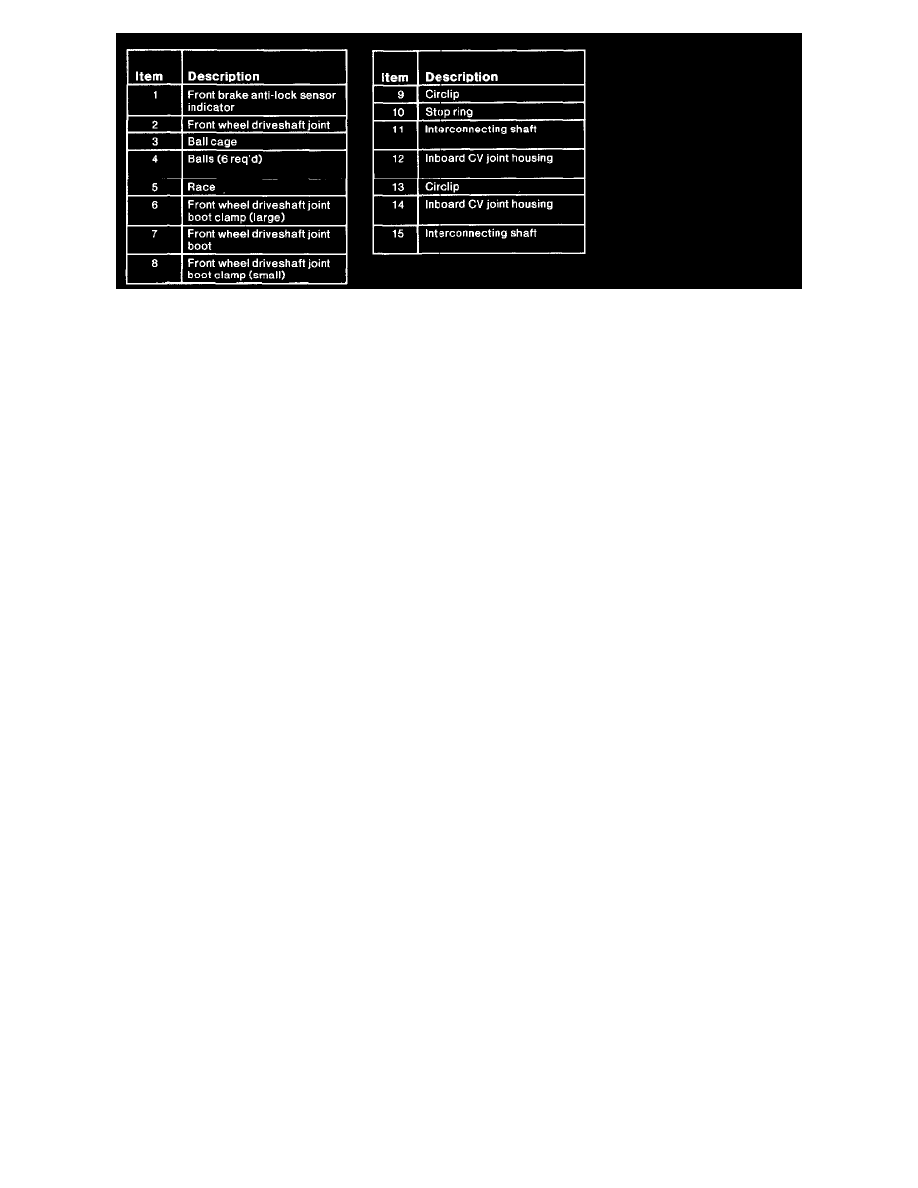Sable V6-3.0L VIN U (1999)

Front Drive Halfshafts 2 Of 2
The front wheel drive halfshaft system consists of and operates as follows:
^
Halfshafts transmit engine torque from the transaxle to the front wheels.
^
Halfshafts rotate at approximately one-third the speed of a conventional rear-wheel drive driveshaft and do not contribute to rotational vibration
disturbances.
^
A Constant Velocity (CV) joint is a mechanism for transmitting uniform torque and rotary motion while operating through a range of angles.
^
CV joints at both inboard (differential) and outboard (wheel) ends provide operating smoothness.
^
The inboard CV joints are plunge-type joints that provide the axial movement necessary to affect shaft length changes.
^
The outboard CV joints have a higher angle capability than the inboard CV joints to accommodate suspension travel.
^
Inboard and outboard CV joints connect to a splined shaft. Driveshaft bearing retainer circlips retain the CV joints to the splined shaft.
^
On the RH side, a driveshaft bearing retainer circlip retains the splined inboard CV joint to the differential side gear. Install a new cowslip every
time you remove the halfshaft from the vehicle.
^
A front axle wheel hub retainer secures the splined outboard CV joint to the wheel hub.
^
The lubed-for-life CV joints use special CV joint grease. They require no periodic lubrication.
^
A periodic inspection of the outer and inner boots is necessary so that immediate repair can take place if damage or grease leakage is evident.
Continued operation without repair will result in CV joint wear and noise due to contamination and loss of the CV joint grease.
Halfshaft Handling
CAUTION: Never pick up or hold the halfshaft only by the inboard or outboard CV joint.
Handle all halfshaft components carefully during removal and installation and during various component disassembly and assembly procedures.
^
Do not over-angle the CV joints.
^
Damage will occur to an assembled inboard CV joint if it is over-plunged outward from the joint housing.
^
Never use a hammer to remove or install the halfshafts.
^
Never use the halfshaft assembly as a lever to position other components. Always support the free end of the halfshaft.
^
Do not allow the boots to contact sharp edges or hot exhaust components.
^
Handle the halfshaft only by the interconnecting shaft to avoid pull-apart and potential damage to the CV joints.
^
Do not drop assembled halfshafts. The impact will cut the boots from the inside without evidence of external damage.
^
Keep CV joints clean and maintain correct grease refill when installing new halfshaft components.
^
Do not remove the outer CV joint by pulling on the interconnecting shaft.
^
Inspect all machined surfaces and splines for damage.
Wheel and Tire Balancing, Rear
WARNING: DO NOT BALANCE THE FRONT WHEELS AND TIRES WHILE MOUNTED ON THE VEHICLE. POSSIBLE TIRE
DISINTEGRATION, DIFFERENTIAL OR HALFSHAFT FAILURE CAN RESULT, CAUSING PERSONAL INJURY OR EXTENSIVE
COMPONENT DAMAGE. USE AN OFF-VEHICLE WHEEL AND TIRE BALANCER ONLY.
Hoisting
CAUTION: Use a frame-contact hoist only. Vehicle or component damage can result if other types of hoists are used.
Never raise the vehicle using the halfshafts as lift points.
Towing
Never tow a vehicle using the halfshafts as anchor points for tow truck cable or chains.
